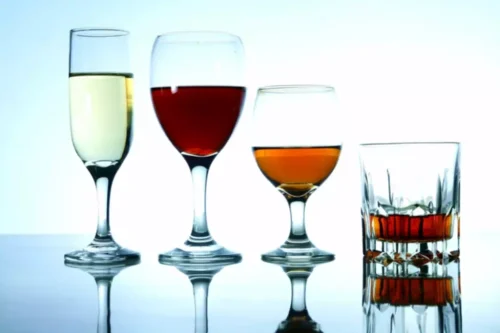Unfortunately, once it does start to progress, there isn’t much that can be done to stop it. Drinking alcohol may decrease the sensitivity of your peripheral vision. You might not see very well on your right and left sides, which can cause you to ignore objects on your sides.
ALCOHOL INTOXICATION
- In addition to the short-term and temporary effects of alcohol, consuming heavy amounts of alcohol can lead to irreversible eye problems over time.
- In the case of damage to the eye from alcohol abuse, it is best to be wise in preventing it.
- For example, if you notice the whites of the eyes are turning yellow, this is actually not an eye condition.
- Excessive alcohol consumption often leads to overall fatigue and tiredness, including eye fatigue.
In the long-term, regular consumption of alcohol can significantly increase your risk of developing cataracts as early as 40 years old, and cause blurring of vision or double vision that doesn’t go away. In the short-term, overconsumption of alcohol can result in blurry or double vision. It can cut down on your peripheral vision as well, resulting in tunnel vision. Age-Related Macular Degeneration (AMD), is a progressive eye condition. Understanding the potential risks of alcohol consumption concerning AMD is fundamental for promoting eye health and making better lifestyle choices. Studies suggest alcohol in excess can trigger inflammation, deplete essential nutrients, and lead to adverse health effects.

How alcohol affects recovery
Limiting the amount of alcohol consumed and staying adequately hydrated can help reduce the likelihood of this symptom. It is also advisable to avoid consuming alcohol on an empty stomach and to take breaks between drinks. If blurry vision persists or worsens after drinking, it is important to seek medical attention. Additionally, taking breaks between alcoholic beverages can help prevent or reduce the occurrence of blurry vision.
- Cessation of alcohol consumption and eating a more well-balance diet can help prevent the disease from progressing, however.
- Alcohol widens the blood vessels, including those in the eyes, causing redness and the appearance of bloodshot eyes.
- You may consider first reaching out to a doctor, as they may be able to help determine your medical needs and possibly refer you to treatment centers.
- One study found that having a 0.08% blood alcohol level (the legal limit for driving in most states) can affect various types of eye movements in healthy young adults.
What Happens at Various BAC Levels?

Florida Eye Specialists and Cataract Institute would like you to gain some knowledge about eyes and alcohol and whether excessive drinking can lead to eye problems. There are many reasons to stop drinking, and damage to vision—whether short- or long-term—is one of them. Blurry vision after drinking alcohol is a common symptom of alcohol intoxication.

Is blurry vision after drinking a temporary or long-term effect?

For this reason, dry eyes are particularly problematic with chronic alcohol abuse. Heavy drinking can lead to long-term effects on the eyes that can range in severity from rapid eye movement to vision loss and blindness. Long-term heavy drinking can cause interference between the brain and the eyes. It may also damage or speed up the aging of various structures inside the eye, such as the lens, retina, and optic nerve. On the other hand, chronic alcohol consumption will negatively affect the entire body. For example, if you notice the whites of the eyes are turning yellow, this is actually not an eye condition.
Alcohol and eyesight are connected, and even light alcohol consumption can impair the eyes and affect vision. Alcohol is a diuretic, which means it removes water from the body by making you urinate frequently. In the short term, this can have a dehydrating effect, leaving the eyes dry and irritated. In fact, dry eyes is a common complaint among drinkers, and chronic alcohol abuse can lead to the development of dry eye syndrome.
Alcohol and Cataract
- While chronic and excessive alcohol use can lead to severe ocular consequences, early detection and treatment can reverse or limit the damage in many cases.
- The alcohol reaches the eyes through the blood vessels, affecting the delicate structures responsible for vision.
- All research on the Coastal Detox website, including images, texts, and graphics, is strictly for informational purposes.
- The first and most crucial step to treating alcoholic eyes is to stop alcohol consumption.
- It is important to determine the cause of any vision changes; your eye doctor can treat them or send you to a specialist for further diagnosis or treatment.
- You may have read online that alcohol reduces the effectiveness of some antibiotics.
It is hard to predict whether you will develop effects that harm your liver, heart, nerves, or eyes, and you can experience a combination of these. If you drink excessively, be sure to see a healthcare professional so you can get help cutting down before the effects on your health get worse. Moreover, it is essential to prioritize eye health and ensure that any pre-existing blurry vision after drinking alcohol conditions are properly managed. Individuals with underlying eye conditions, such as astigmatism or dry eye syndrome, may be more prone to experiencing blurry vision after drinking. By routinely visiting an eye doctor and following their recommendations for managing these conditions, individuals can minimize the impact that alcohol has on their vision.
- Generally speaking, anything above drinking in moderation can negatively impact your health.
- Over time, frequent alcohol abuse can lead to permanent visual impairments, including cloudy vision, double vision, light sensitivities, and reduced color perception.
- Regular alcohol use can cause permanent double or blurred vision while also impairing a person’s ability to perceive colors and light.
- If you have glaucoma or any other eye diseases that affect eye pressure, please consult with an eye care professional about alcohol’s potential impact on your eye health.
- Aside from the obvious symptom of having the whites of the eye look red, bloodshot eyes may also feel itchy, burning, and painful and may cause the eyelids to swell.